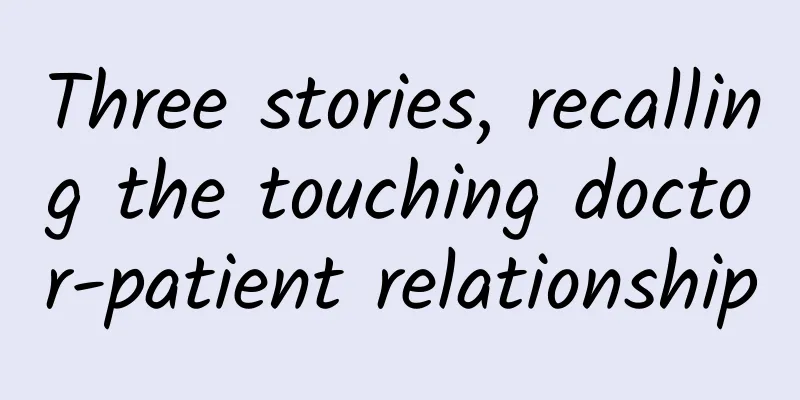|
His name is Kang Kai, and he is the inventor of the famous "Kang's operation". When we first met, I felt that he looked like the actor Hu Ge. During the interview, I felt that he lived up to his name, with a generous and straightforward personality. His gray hair added a touch of elegance to him.
In Dr. Kang Kai's clinic, there is no tension like going to the hospital for a medical consultation, but there is the ease and pleasure of chatting with friends. Why did this handsome man, who could have gone the Hollywood route to make movies, choose the profession of doctor? How did he, in his early 40s, become a nationally renowned gynecologist step by step? Probably talent, ideas, and courage!
From not wanting to be a doctor to becoming a famous doctor, Kang Kai's life is full of drama. Kang Kai was a bit unprofessional in college. He was one of the founders of the Golden Finger Guitar Association of Chongqing Medical University. He played amazing classical music and was always surrounded by a group of good friends who drank with music. Day after day, year after year, Kang Kai carried the red cotton guitar that his sister didn't want and wandered around various universities in Chongqing. What is even more incredible is that as a medical student, he enthusiastically published papers in the field of mathematics such as "Proof of the Ergodic Theorem of Finite Homogeneous Markov Chains" and "A Special Circular Coding Problem" during his college years.
The anatomical specimen examination is daunting for many medical students, but it is a course Kang Kai is proud of. Although he hardly attended the anatomical specimen class, he became the only student in the grade who got full marks in the anatomical specimen examination for three consecutive times. However, his experience was entirely based on his "imagination" and just by flipping through the "Atlas of Anatomy" that everyone has. It is precisely because of this talent that Kang Kai is destined to become an excellent gynecological surgeon.
Kang Kai is most proud of the "laparoscopic anterior abdominal wall suspension fixation technique for prolapsed uterus" he invented in 2010, which is known as the "Kang-style surgery" in the industry.
Uterine prolapse is a common disease among middle-aged and elderly women. The causes include pregnancy, childbirth (especially difficult childbirth), heavy physical labor too early after childbirth, constipation, chronic cough, obesity, and atrophy of the pelvic floor support structure after menopause in the elderly.
With the aging of the population, about 30%-40% of women may face pelvic floor dysfunction in their lifetime. In addition to uterine prolapse, there are also problems such as stress urinary incontinence and genital fistula. However, according to records, the youngest clinical case was a 17-day-old newborn who suffered from uterine prolapse due to congenital pelvic floor dysfunction.
For thousands of years, doctors have been exploring good ways to treat uterine prolapse. Currently, there are more than 50 surgical methods. However, these surgical methods are either ineffective or complicated to operate. Because large-area patch-like foreign bodies are used as support, serious long-term complications often occur. Smart Kang Kai thought of laparoscopy.
Kang Kai cleverly used the advantages of laparoscopy to simplify complex problems and fully utilized the patient's own tissue as support, providing new surgical options for obstetricians and gynecologists and solving the urgent needs of women with uterine prolapse.
This surgical method invented by the Chinese was brought abroad by Kang Kai in 2012 and exchanged at the world's highest-level obstetrics and gynecology academic conference - the 20th FIGO World Congress of Obstetrics and Gynecology, which sparked heated discussions among peers. This is not only the pride of Kang Kai, but also the pride of the Chinese people. This surgery has also been included in the "12th Five-Year Plan" national key book - "Surgical Treatment of Female Pelvic Organ Prolapse" published by Peking University Medical Press.
In his 20 years of medical practice, Kang Kai has been deeply influenced by several patients. In fact, Kang Kai has grown from a somewhat idle medical student to a great doctor. He should also thank his three patient friends. Some of them have recovered and been discharged from the hospital under Dr. Kang's careful treatment, while others have left this world. However, their experiences and strong will have left a deep mark on Kang Kai's medical career and made him have a deeper understanding of the profession of doctor. When telling me these three stories, Kang Kai choked up several times...
Story 1: "A 14-year-old boy with leukemia made me realize the fragility of life"
The first story happened in 1994, when Kang Kai was still a young doctor who had just started clinical practice. During that time, he rotated to the hematology department and met a 14-year-old boy named Li Liang (pseudonym). Li Liang is a middle school student suffering from advanced leukemia. Long-term chemotherapy has caused all his hair to fall out. Every day he can only lie helplessly on the hospital bed isolated by plastic film, staring at the ceiling alone...
Kang Kai felt very sympathetic towards the little patient, and when he had nothing to do, he would always move a stool and sit beside his bed to chat with him, play guitar and sing for him, and even treated him as his own brother, taking care of him in every possible way.
Because both Li Liang's family and his treating physician knew that Li Liang would not live long. In that era, late-stage leukemia was an incurable and difficult disease.
However, this day came too fast. One day, when Kang Kai brought a small stool to chat with Li Liang as usual, Li Liang suddenly said to him: "Brother, listen to my heartbeat, I think I'm dying." It is said that people will have a sense of their own when they are dying. Although Kang Kai was prepared in his heart, when this moment really came, he still found it difficult to accept.
He placed the stethoscope on Li Liang’s young left chest, “dongda, dongda, dongda…dongda”, and then nothing more happened…
At that time, for patients with advanced leukemia like Li Liang, the so-called rescue was just out of humanity and respect for a life, but in fact it was meaningless. Kang Kai burst into tears, as if he had lost a younger brother.
Li Liang's death made Kang Kai realize the fragility of life. Medicine is so powerless in the face of disease. As a doctor, he can only watch the death of young lives.
After the interview, I felt a little heavy because the story of the boy with leukemia kept coming back to me. Kang Kai played guitar and sang for him, sat next to him and chatted with him until the boy passed away. It seemed as if I was there at the time, and I was deeply moved...
This also reminds me of the words engraved on the tombstone of American doctor E.L. Trudeau: Sometimes to heal, often to help, always to comfort.
We are potential patients throughout our lives, and going to the hospital for medical treatment is inevitable, but we should understand one thing: doctors are not God, they can only do what is within human capabilities.
Story 2: "When you master a skill, you can fight against death"
Later, the story develops to the point where Kang Kai is assigned to work as a surgeon in one of the most beautiful tertiary hospitals in Chongqing at that time. The trauma surgery department of this hospital is very famous, and it encounters many critically ill patients who suffer from accidental trauma every day. Late one night, Kang Kai treated a young man who had been stabbed many times during an argument, one of the stab wounds going straight into his heart!
Generally speaking, such patients have no chance of survival. However, the senior doctor at that time did not give up on rescuing the patient, but took him to perform a thoracotomy directly, racing against time. Because of this, this patient left a very deep impression on him.
When the patient's chest was opened, the white pericardium was seen swollen with blood, and streams of blood were continuously pouring out from the ruptured pericardium.
The senior doctor asked Kang Kai to put his left index finger into the wound of the pericardium and try to plug the hole in the heart. For the first time, his fingers felt the trembling of the myocardium and the impact of blood flow on his fingertips.
At this time, the senior doctor directly sewed Kang Kai's index finger, glove, pericardium and heart together, and cut open the pericardium to clean the blood while maintaining effective circulation support. At the moment when Kang Kai slowly withdrew his finger, the senior doctor quickly completed the careful and meticulous repair of the heart. In the end, the injured person miraculously survived.
A doctor's decisiveness, judgment, adaptability and skilled skills determine the outcome of a life. The death of the boy with leukemia made the young Kang Kai deeply feel the powerlessness of doctors, but the decisiveness and courage of the senior doctor in this incident made him realize the greatness of the profession of doctor.
When you master a skill, you may have the ability to wrestle with death. As a doctor, you should not be satisfied, but should continue to learn, work hard and have the courage to overcome difficulties.
Story 3: “The relationship between doctors and patients is more of a contractual one”
Perhaps it was fate that, in the postgraduate examination a few years later, Kang Kai was accidentally assigned to the gynecological oncology major and became a relatively rare male gynecologist at that time.
At this time, a female patient named Jiang Hui made him feel proud of the profession of gynecological oncologist. One summer night in 2004, a young female patient named Jiang Hui was sent to Kang Kai's ward. Her belly had inexplicably grown rapidly in just a few months. B-ultrasound at the grassroots hospital found that her belly was full of lumps and ascites. Kang Kai was on duty that day, and a blood test revealed that Jiang Hui's alpha-fetoprotein was more than 1,000 times higher than the normal value.
Generally speaking, elevated alpha-fetoprotein is a hallmark of liver cancer. In the absence of any abnormalities in the patient's liver, Kang Kai had to think of a gynecological tumor called endodermal sinus tumor. What kind of disease is endodermal sinus tumor?
Endodermal sinus tumor is a malignant tumor arising from ovarian germ cells. It is extremely malignant and progresses very rapidly.
This tumor is very unkind and always occurs in young women. Even in clinical practice, teenage girls have been seen with this disease. However, the causes of endodermal sinus tumors are also very complicated, and the most closely related factor is genetics.
Among malignant ovarian germ cell tumors, endodermal sinus tumors are reported to have the highest incidence in China, accounting for 31.9%-60.2% of malignant ovarian germ cell tumors. Endodermal sinus tumors have no symptoms in the early stages and are usually discovered when blood is drawn for alpha-fetoprotein testing.
At that time, obstetrics and gynecology textbooks and guidelines generally believed that no matter what treatment method was used, the prognosis of endodermal sinus tumor was very poor. Once it occurred, the patient usually did not survive for more than a year. The surgery found that Jiang Hui's tumor had metastasized and spread widely. According to the consultation opinions of the city's experts, Jiang Hui would not live long.
But Kang Kai did not give up any chance to save Jiang Hui. He used his rest time to search for relevant literature on endodermal sinus tumor.
Contrary to the textbooks at the time, many foreign literatures believed that this malignant tumor originating from ovarian germ cells was extremely sensitive to chemotherapy with BVP or BEP regimens. It might even become the second solid tumor that humans could conquer (the first solid malignant tumor that humans could conquer was also a gynecological tumor - choriocarcinoma).
The then attending physician, Kang Kai, decided to try BVP chemotherapy for Jiang Hui. With the active cooperation of the patient's family and the patient, chemotherapy began.
The trust and efforts between doctors and patients broke the curse of the incurable endodermal sinus tumor at that time, and also became a miracle in Kang Kai's medical career. After recovering, Jiang Hui now runs a hot pot restaurant and returns to her original peaceful and happy life. This year is the 12th year since her recovery. The grace of saving her life made the doctor and patient become friends.
Jiang Huichang said to Kang Kai: "Without you, I don't know where my ashes are now." Kang Kai said: "If you didn't trust me as a young doctor, I might not be here today." This incident not only made Kang Kai realize the satisfaction and sense of accomplishment of being a doctor, but also made him realize the value of solidarity and trust between doctors and patients.
Perhaps it is precisely because of these experiences and the unforgettable patients that Kang Kai has become what it is today. The relationship between doctors and patients is not only a diagnosis and treatment relationship, but also a contract. From the moment a patient sees a doctor, this contract begins, and it has been the same since ancient times.
The surgical process is actually a transaction of sacrificing a part of the patient's health in order to gain more health. The patient allows you to operate on him out of trust. How the surgery is performed and how each cut is made reflect the trust and respect between doctors and patients. It is the responsibility of every doctor to bring the greatest health to patients at the lowest cost.
Life is like playing cards, and the high probability events are always in the hands of the dealer. People only have one life, and the best thing doctors can do is to be the dealer for all patients, so that more patients have more chances to regain their health, or even their lives.
As I write this, I recall a passage written by Bai Jianfeng, a reporter from the People's Daily: Medicine is an uncertain science. Life and death are only probabilities, not constants. Generally speaking, risks are proportional to benefits. If patients are willing to share risks with doctors and "take a gamble", doctors will face the "risks" and win a glimmer of hope for patients. Just like Dr. Kang Kai said: "Don't let go, there will be hope!" [Legal Statement] This column is originally created by TopMD, and the copyright belongs to the producer. Any form of reprinting, editing and modification is prohibited without authorization, otherwise legal liability will be pursued. This program is for the purpose of popularizing medical knowledge and cannot replace face-to-face consultation with a doctor. The relevant information is provided by experts, and the diagnosis and treatment information and suggestions only represent the personal opinions of the experts for your reference. If necessary, you should go to the hospital for further consultation with experts. |










